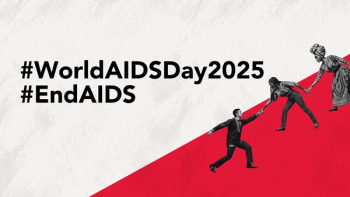
Approaches to Initial Treatment Selection
Joseph Eron, MD, Daniel R. Kuritzkes, MD, and Monica Gandhi, MD, MPH, discuss factors that shape treatment approaches, including tolerability and treatment adherence.
Episodes in this series

Joseph Eron, MD: We’re going to shift gears slightly. We’re going to talk about the approach to treatment selection in the beginning. Monica, when you’re choosing initial therapy, how do you think about choosing therapy with barrier to resistance in mind?
Monica Gandhi, MD, MPH: That’s a great question. I do wonder if our practice at UCSF [University of California, San Francisco] differs from other places. We also follow the guidelines and think about integrase inhibitor–based regimens in the first line. Sometimes you really can’t predict someone’s adherence level. We’re inherently not very good at that, so you may want to watch with time. But if someone has adherence barriers, and they’re taking 4 or 5 doses a week or even less, I will say—and this is our practice—that we’ve gone more to darunavir, ritonavir, TAF [tenofovir alafenamide], and FTC [emtricitabine] as our regimen for patients who don’t look like they’re very adherent. The reason we’ve done that is the DAWNING study.
I’m not saying that the DAWNING study didn’t show that dolutegravir wasn’t superior to lopinavir-ritonavir. It did, in all forms. The DAWNING study was in sub-Saharan Africa comparing these 2 regiments in the setting of NNRTI [non-nucleoside reverse transcriptase inhibitor] resistance. When people failed in the dolutegravir arm—and I know it was a very low rate, but there were 7 failures—they failed with…resistance. When they failed in the lopinavir-ritonavir arm, as we’ve seen consistently with PIs [protease inhibitor], they didn’t fail with PI mutations. I know, because I’ve talked to both of you over the years, that this is a differing practice, but we also have a very adherence-challenged population. Ward 86 is a publicly insured population—34% of our patients are marginally housed, 43% have substance use, and mental illness has intensified during the pandemic. We start with integrase inhibitors, but if we see something that worries us we switch over.
Daniel R. Kuritzkes, MD: I’ve heard that approach, and the rationale behind it. To be honest, it’s never made sense to me. If you have people who are adherence challenged—a regimen that requires 3 or 4 tablets, particularly 1 that includes a boosting agent that may add to intolerance—then you’re not making things better; you’re making things worse. In fact, in the DAWNING study, the big difference between the boosted arm and the dolutegravir arm was because of tolerability, not because of inherent antiviral activity.
Monica Gandhi, MD, MPH: That’s an excellent point, except that this all changed for us in 2018 with the single-pill combination of darunavir, cobicistat, and FTC [emtricitabine]. We definitely wouldn’t do ritonavir boosting or separate out pills. That first-ever PI-based single-pill combination did change our minds. I agree with you that lopinavir-ritonavir is not darunavir-ritonavir. Lopinavir-ritonavir is not as tolerable. This is all put together, and that only changed in 2018 for us.
Joseph Eron, MD: If you have cases of bictegravir or dolutegravir resistance in a treatment-naïve person, then you have a case report. They’re just not described. Maybe you’re seeing them and you’re not reporting them?
Monica Gandhi, MD, MPH: We’re not. We do have 3 R263K mutations that developed on bictegravir. First, M184V developed, and then R263K did, which we’re worrying broke through with bictegravir. It’s been reported now 4 times in the literature. When I was in Brazil, people said they were seeing more R263K. They were using a lot more of bictegravir then they were reporting. The problem with case series is that you have to report them. I’m not saying the bictegravir and dolutegravir don’t have incredibly high genetic virus resistance. I love these drugs. I’m telling you our approach in a very difficult patient population. It’s not routine. If you can take it 5 times a week, then we’ll do it.
Transcript Edited for Clarity
Newsletter
Stay ahead of emerging infectious disease threats with expert insights and breaking research. Subscribe now to get updates delivered straight to your inbox.




















































































































































































































































































